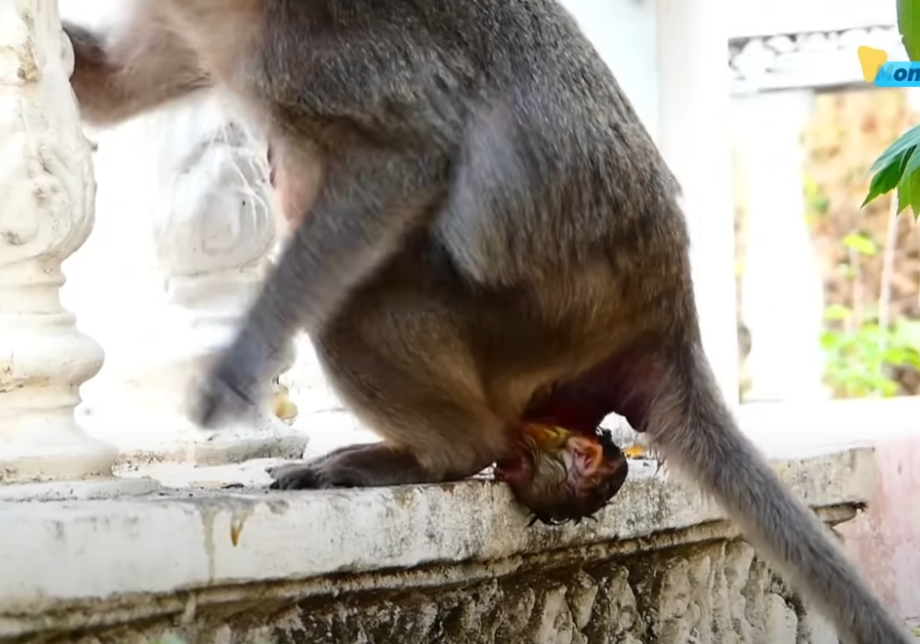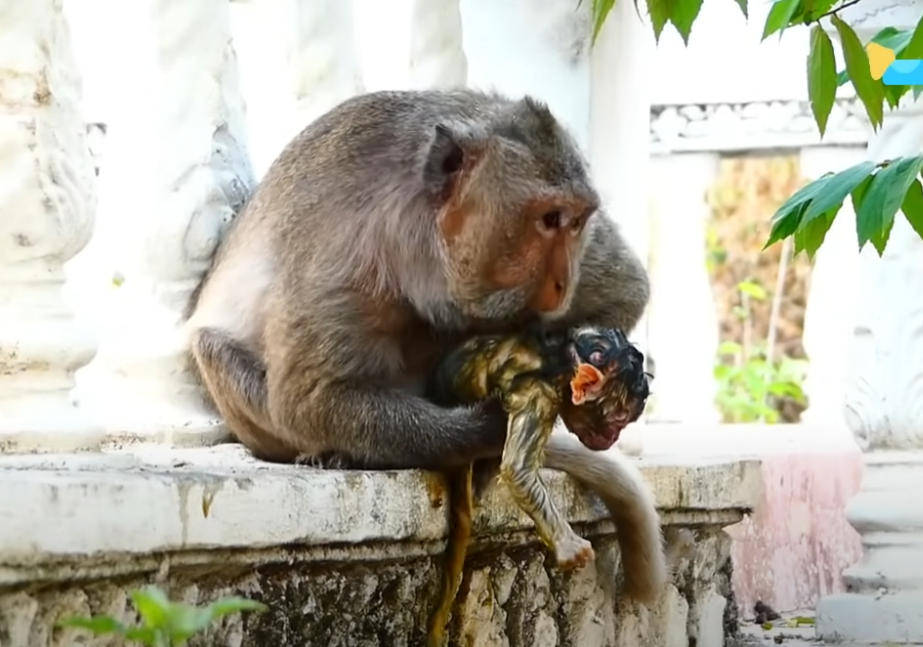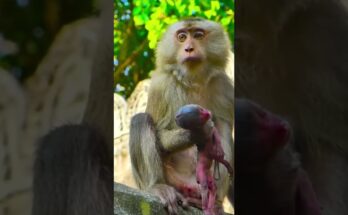In the heart of dense forests and serene jungles, macaque monkeys live in tightly-knit social groups, often displaying strong bonds within their families. One of the most touching sights is a macaque mother giving birth to her baby, especially during the daylight hours when the events are illuminated by the natural glow of the sun. This miraculous occurrence showcases the remarkable resilience and nurturing instincts of these creatures.

Macaques, known for their intelligence and social behavior, follow the typical pattern of primates in their reproduction. When a female macaque is ready to give birth, she seeks a secluded, safe spot within the group to ensure the safety of her newborn. Unlike some animals that may retreat to more hidden areas for privacy, macaque mothers often give birth in full view of the troop, trusting the group’s support.
As daylight shines down, the birth unfolds with a calm yet intense focus. The mother, already experienced or guided by maternal instincts, carefully manages the process. The birth itself is quick, with the baby macaque emerging from the mother’s womb, still covered in amniotic fluid, and clinging instinctively to the mother’s body. The mother immediately begins to lick and groom the newborn, cleaning it off and stimulating its first breaths. The bright daylight serves as a witness to the beginning of a new life, highlighting the mother’s immediate response to her newborn’s needs.

The group of macaques often gathers around, observing the new arrival with curiosity. Other females, particularly those with offspring of their own, may come closer to provide support. They groom the mother, reinforcing the social structure of the group while offering assistance as needed. The newborn macaque, now secure in its mother’s arms, begins its journey into the world, depending on the nurturing care of the mother and the protection of the troop. In daylight, this cycle of birth and life continues, echoing the timeless rhythms of nature.


